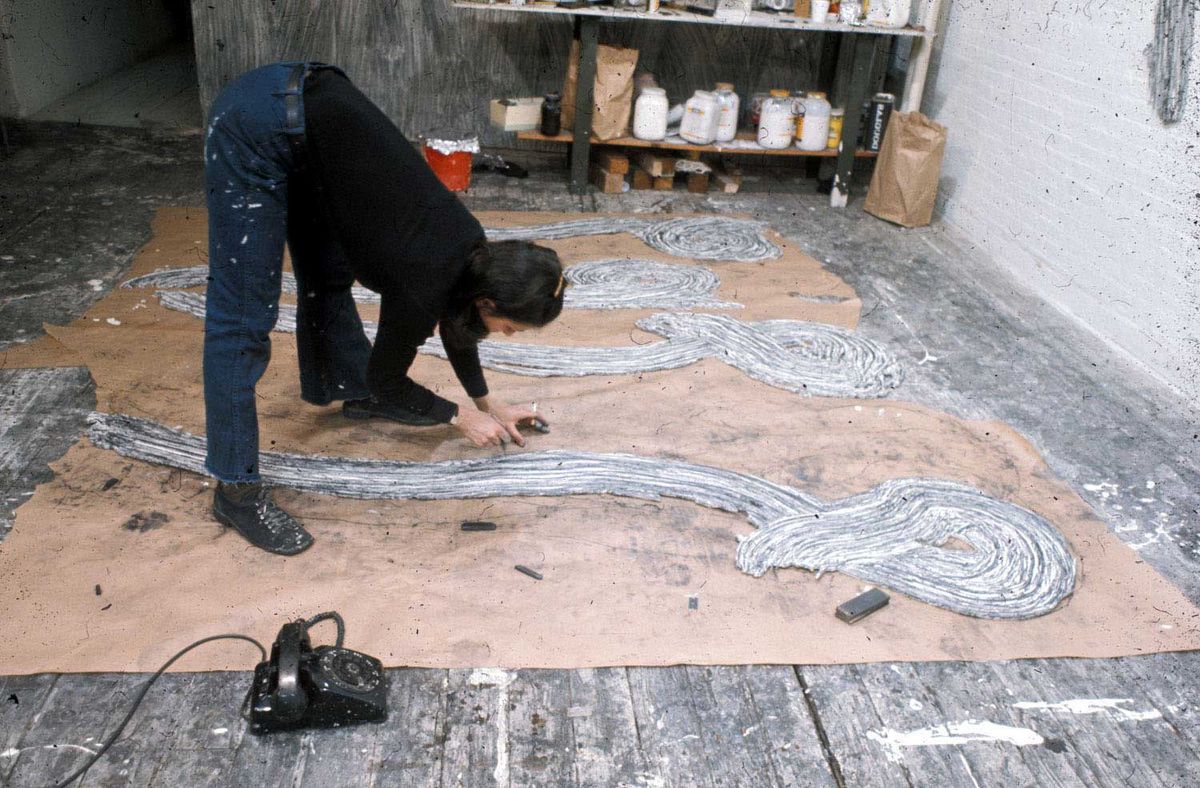Check out The Art Newspaper's guide to London Gallery Weekend 2022 for recommendations on the best exhibitions to see during the three-day event, top trends and commentary
London Gallery Weekend came to life as a way to celebrate and recharge the UK capital’s contemporary art scene after the long pandemic lockdowns. But a glance at the roster of 150-odd gallery shows planned for the event’s second edition also reveals how elastic “contemporary” can be. Alongside the up-and-coming young talents and more established international names are the artists from decades past who are still ripe for rediscovery. Here’s our pick of five art-historical rediscoveries not to miss, from a subversive take on New York Minimalism to the dark affinities between Japanese teaware and Kasimir Malevich.
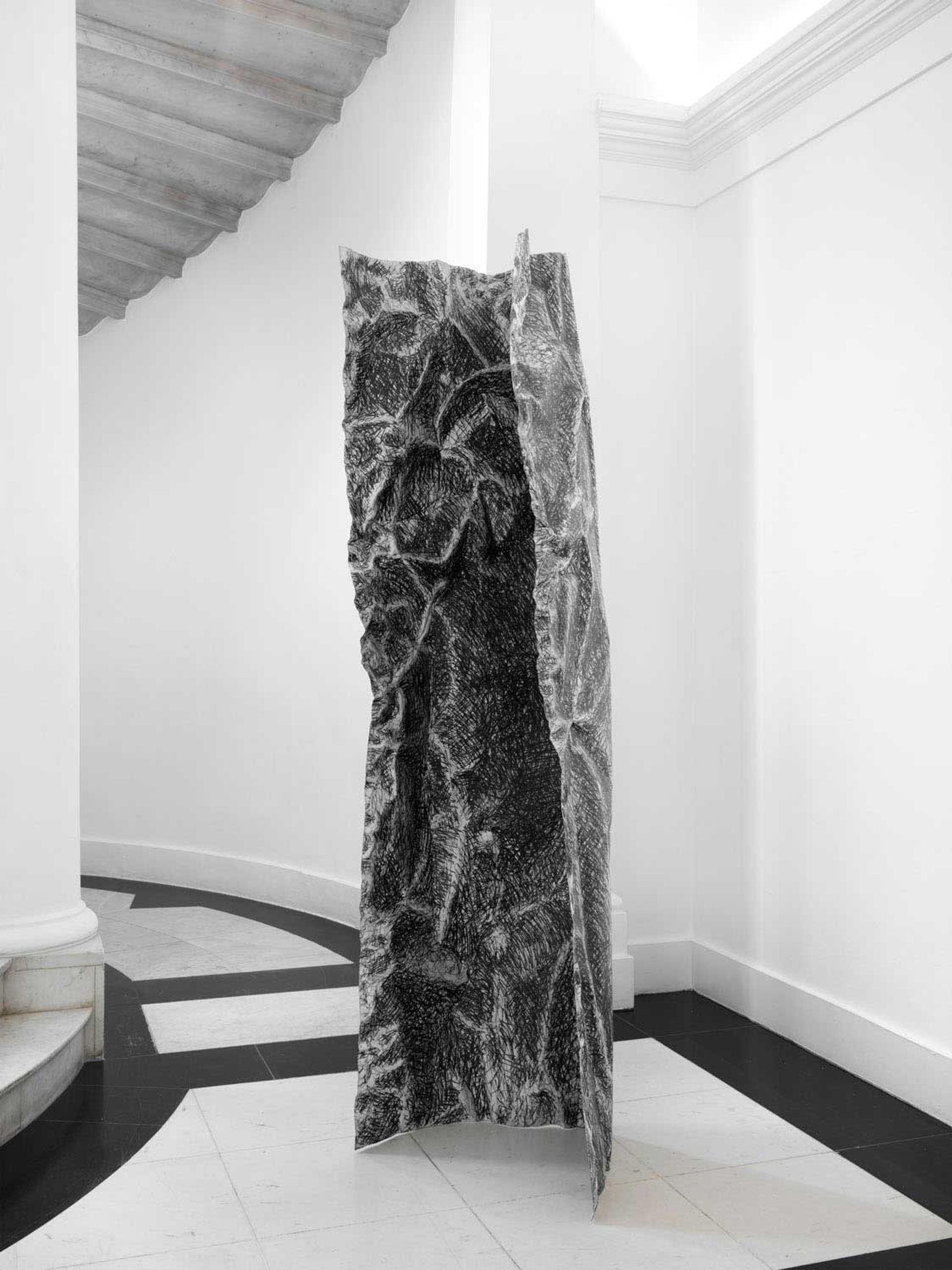
Castoro's Shadow Flasher (1979)
© The Estate of Rosemarie Castoro. Photo: Eva Herzog. Courtesy of Thaddaeus Ropac gallery
Rosemarie Castoro: Working Out
Until 21 May, Thaddaeus Ropac, 37 Dover Street, W1S 4NJ
The underrated New York artist Rosemarie Castoro “subverted or overrode Minimalism on its own turf”, according to the critic Lucy Lippard. She invested her abstract works with a gestural, bodily quality that set her apart from male peers such as Carl Andre (her husband from 1964 to 1970), Lawrence Weiner and Sol LeWitt. She called herself a “paintersculptor” and brought a background in dance to her studio practice, wielding a broom and a saw to create her giant brushstroke wall pieces in gesso. They are the centrepiece of Thaddaeus Ropac’s show, swooping across the walls of the main gallery as if they had a life of their own. The metal works, too, are imbued with dynamism and delicacy. Shadow Flasher (1979) is a curved and crumpled steel sheet, covered in gesso and graphite scribbles like a blown-up piece of paper. Upstairs, freestanding welded sculptures with silvery folds evoke a group of figures in motion.
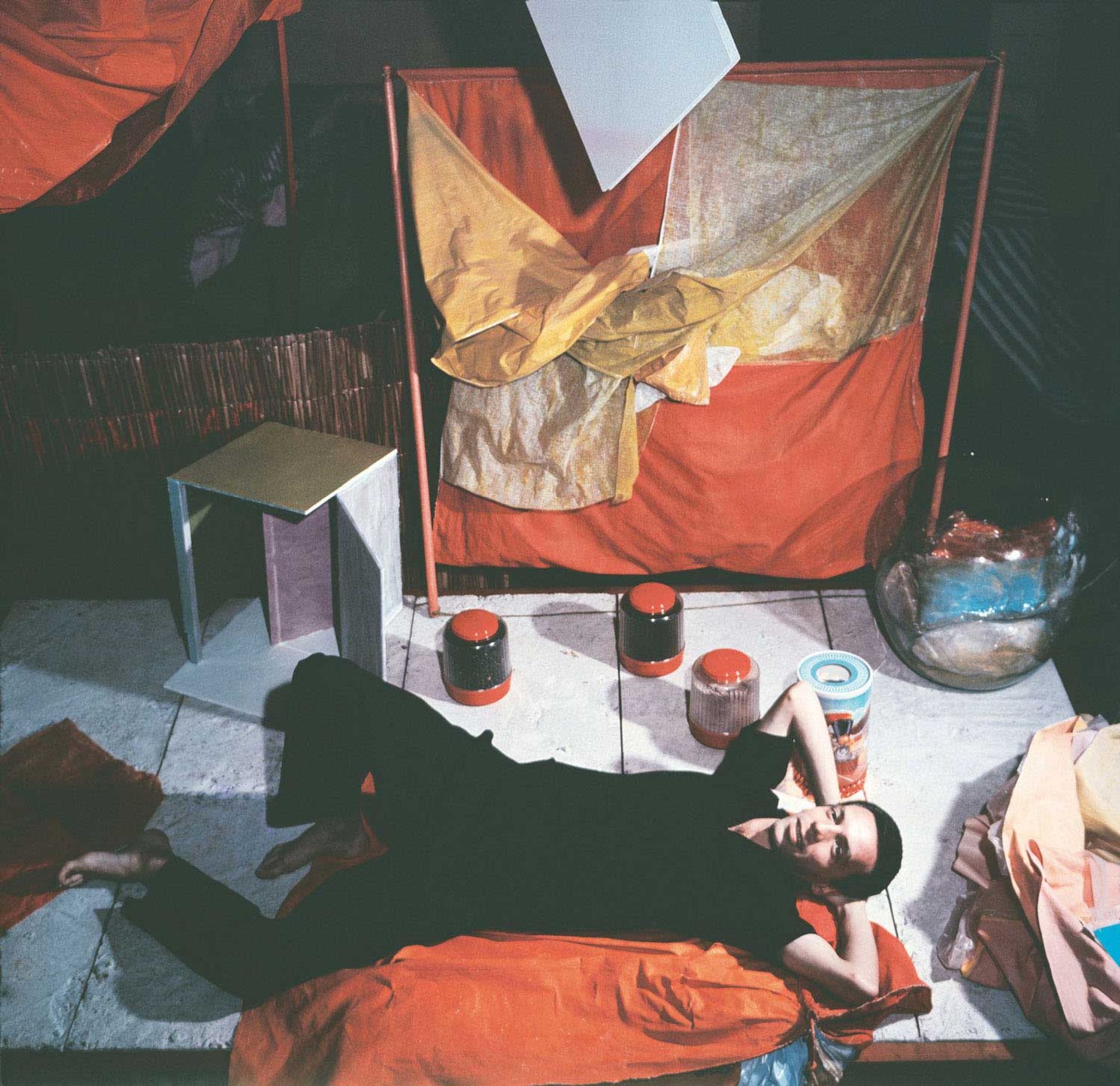
Hélio Oiticica with Bolides and Paragolés in his studio at Engenheiro Alfredo Duarte Street, Rio de Janeiro, 1965
© Hélio Oiticica. Courtesy of the Projeto Hélio Oiticica and Lisson Gallery
Until 25 June, Lisson Gallery, 27 Bell Street, NW1 5BY
A key figure in post-war Brazilian art, Hélio Oiticica was a restless innovator until his untimely death in 1980 at just 42. The former Tate curator Ann Gallagher has organised this first survey of his work in London since 2007, when she led a major exhibition at Tate Modern. There will be early abstract compositions from Oiticica’s affiliation with the mid-1950s collective Grupo Frente, which broke with the figurative and nationalist style of earlier Brazilian painting. The jostling colour planes of the Metaesquesma works—a series the artist described as an “obsessive dissection of space”—soon paved the way for his shift into sculpture and environmental installations. Taking colour into three dimensions are the Bólides, box constructions and ready-made objects that were often filled with powdered pigment. Oiticica’s experiments with colour and space culminated in interactive multi-sensory installations such as Nas quebradas (1979), which relates to the Rio de Janeiro favelas where he took up samba dancing and began making socially engaged work in the 1960s.
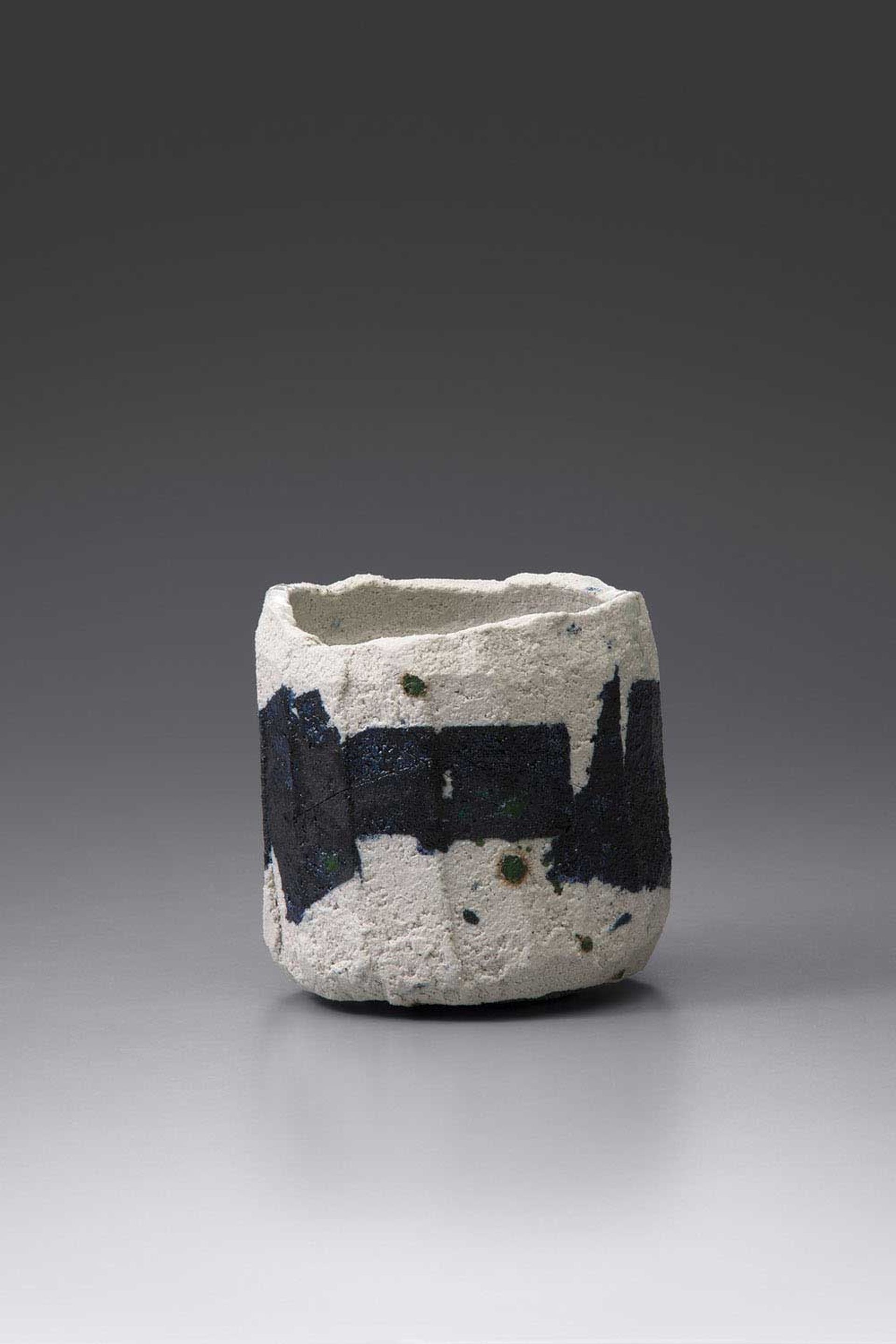
Raku Kichizaemon XV Jikinyū's Shin (immerse, soak in) (2021)
Photo: Takashi Hatakeyama. Courtesy of Annely Juda Fine Art
Kasimir Malevich, Raku Kichizaemon XV
12 May-9 July, Annely Juda, 23 Dering Street, W1S 1AW
Twenty drawings by the Kyiv-born avant-garde artist Kasimir Malevich and 20 tea bowls by the Kyoto-based potter Raku Jikinyū (previously known as Raku Kichizaemon XV) will meet in a show that follows a dual exhibition held last year at the Sagawa Art Museum in Japan. The encounter was born from Jikinyū’s conviction of a deep affinity between Malevich’s Black Square (1915) and the black-glazed Raku tea bowls made by his ancestor Chōjirō, who invented the esteemed hand-moulded ware in the 16th century. Jikinyū writes of how Chōjirō eschewed the usual trappings of creative practice—colour, form and decoration—and plunged into “absolute darkness”. One of Chōjirō’s vessels from the 1580s will also be on view at Annely Juda. In the absence of the Black Square itself, Malevich’s Suprematist drawings of abstract geometries from the same period will be juxtaposed with Jikinyū’s rugged white “Rock” bowls, a title chosen to reflect their anonymity and artlessness, like pebbles by the roadside.
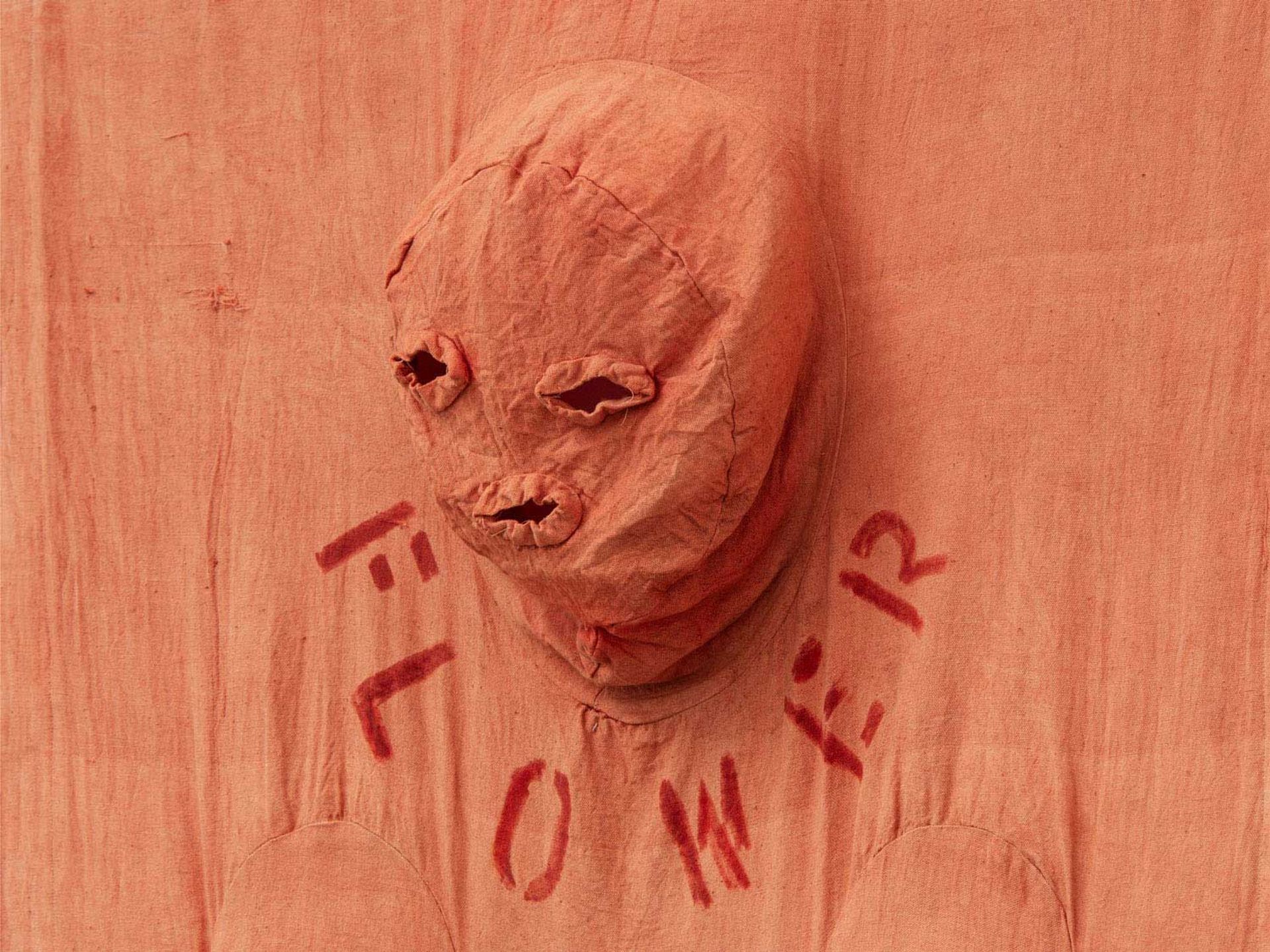
Nicola L's Flower (around 1974)
Courtesy of Alison Jacques, London, and Nicola L. Collection and Archive © Nicola L. Collection and Archive
13 May-23 July, Alison Jacques, 16-18 Berners Street, W1T 3LN
The French artist Nicola L was in her mid-80s when she had her first institutional retrospective in 2017, the year before her death, at SculptureCenter in New York. Sculpture was just one of various media she dipped into through her 50-year career, along with painting, performance and film. Her anthropomorphised furniture designs and wearable body suits known as Pénétrables—such as the 11-person raincoat she made for Brazilian musicians at the 1970 Isle of Wight festival—are now gaining overdue recognition for their playful Pop aesthetic and spirit of feminist subversion. A vinyl sofa in the shape of a slim white foot and a lamp with ruby-red plastic lips are among the works coming to her first UK solo show, a partnership between Alison Jacques and the Nicola L archive in Los Angeles. It heralds a major exhibition at Camden Art Centre, planned for 2024.
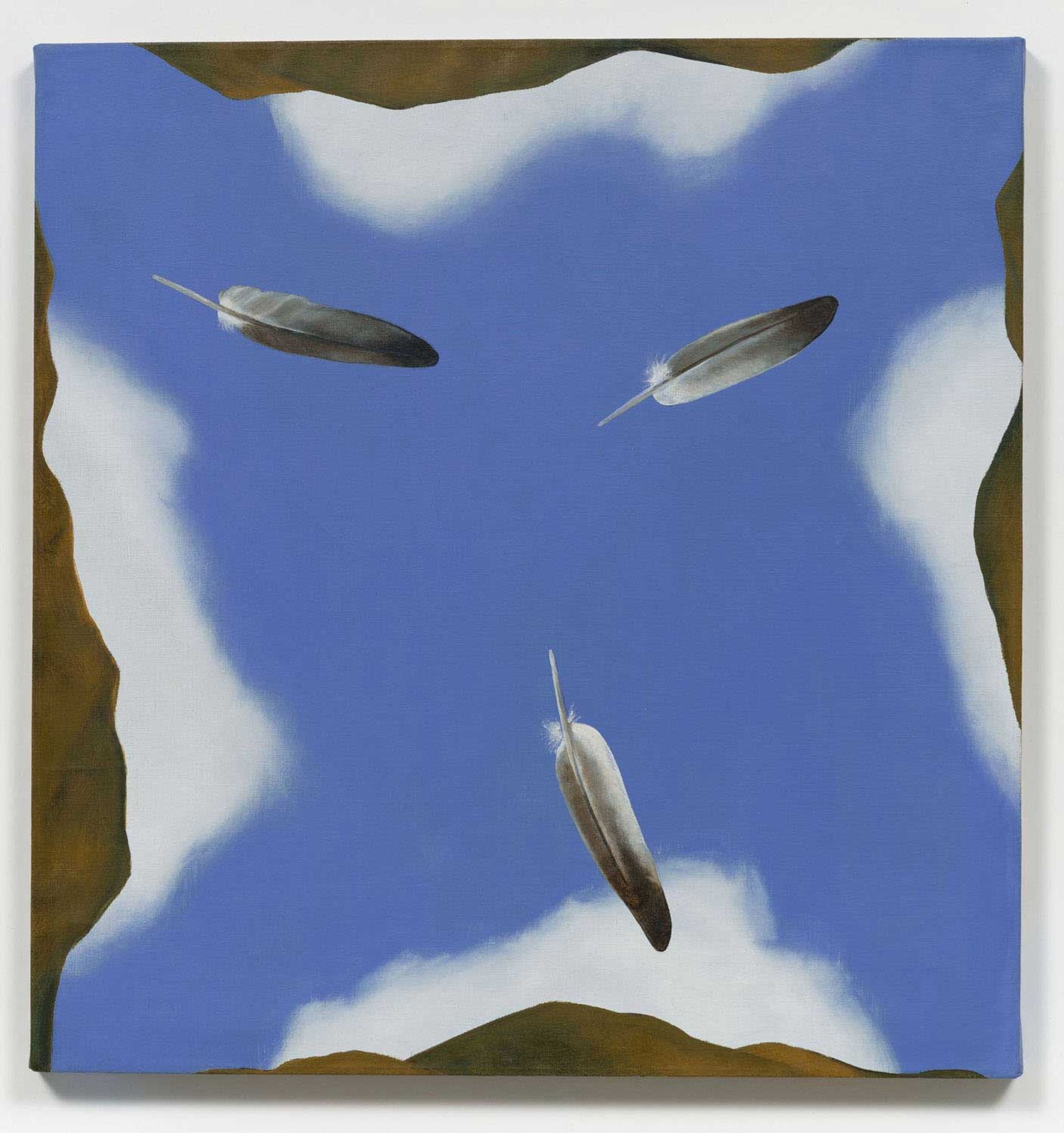
Luchita Hurtado's Mask (1977)
© The Estate of Luchita Hurtado. Courtesy of The Estate of Luchita Hurtado and Hauser & Wirth. Photo: Jeff McLane
13 May-30 July, Hauser & Wirth, 23 Savile Row, W1S 2ET
Having spent much of her life painting privately, Luchita Hurtado became an art-world sensation almost overnight in her 90s. Three years after a retrospective at the Serpentine Galleries in London and the Los Angeles County Museum of Art first revealed the breadth of her practice, Hauser & Wirth is zooming in on the mystical, elemental Sky Skin series of the 1970s. While Hurtado’s sensual I Am paintings looked straight down at the artist’s naked body, she turned her gaze heavenwards in the Sky Skin works, depicting serene blue skies ringed with craggy mountains inspired by the landscape of Taos, New Mexico, her summer home. Testifying to Hurtado’s belief in the interconnectedness of human beings and nature, the two bodies of work are directly related. The gallery will also show transitional drawings in which breasts, stomachs and knees are abstracted into rolling hills.
The Art Newspaper is an official media partner of London Gallery Weekend


